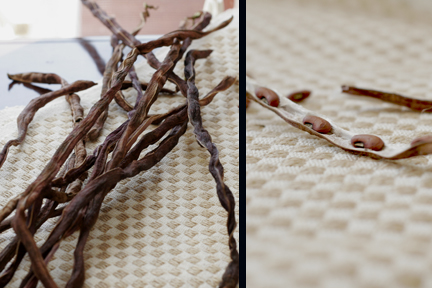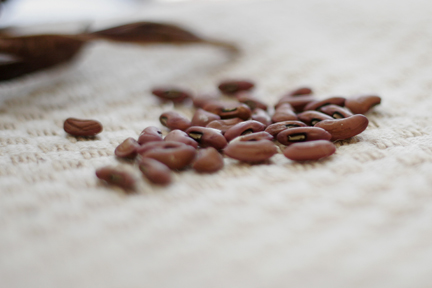Nature, once more, has proven its unpredictability. This past Wintet felt like a very long Spring with intermittent periods of cold spell but nothing like the past Winters in East Tennessee in the last three years. By January, there were a few low lying bushes of forsythia showing off their sunshiny yellow blooms. January, when the rest of the country were pummeled with some dangerous ice storms and 12″ snow storms. Yeah…we certainly have it good here in East TN!
March came rolling in with near-80-degree temperatures. The home gardeners are itching to dig into the dirt. Luckily for them, the garden centers are still sparse on plants or they’d have bought many a plant to set out in the garden too soon. The last frost date for East TN isn’t until April 15, which could mean damage to plants that cannot survive frost.
And here we are, one week past last frost date. There is a forecast of near freezing temperatures. Today was certainly cooler than most days we had in February. At least for me in the gardening department, there is nothing there yet to worry about. I restrained my excitement to plant warm weather veggies too soon.
Speaking of warm weather veggies…here is a post I started writing in the Fall but never got around to finishing. Thought I’d post it here now since one, it is a warm weather vegetable, and two, it is related to gardening. Who doesn’t want to talk about gardening in the Spring – fair weather or not? Here goes the originally titled post, “Saving Seeds – Yard Long Bean Edition.”
Yard Long Beans has many names – Asparagus Beans, Chinese Long Beans, Sitaw (Filipino name), Snake Beans, etc. Regardless of the name, the one true thing about these beans is that they are long, literally.
The variety grown in my garden last summer is called “Chinese Red Noodle Beans” and though they weren’t measured with a yard stick, the longest one harvested, in my best guesstimation, is about 1-1/2 feet. These are of the pole bean variety, too, not bush type. They were trellised on a frame eight feet long by seven feet high but they easily could have grown up to 15 feet given enough vertical support. With a gardener of 4’11” stature, harvesting at 15 feet would have been challenging and funny! Already at 7-feet, I was on my tippy toes on a step stool, arms as stretched as it can get, using the extra length of the shears to get to the beans. Thankfully, there were no falling accidents this year.
Growing beans is considered easy, right along with growing squashes. However, my experience has been dotted with frustration on various issues. My first year of growing pole ‘Kentucky Wonder’ beans, the total harvest was only about a handful of thin tasteless beans. I swore off growing pole beans from that experience. Enter bush beans, particularly the ‘royal burgundy’ variety. The sowing, growing, and harvesting was better than the pole beans, much to my delight, and the flavor was slightly sweet when freshly picked. That same year, my second year into backyard gardening, I also sowed green asparagus beans bought at the garden center. Unfortunately, I went over zealous sowing them in the ground, putting up to nine seeds around one bamboo pole. The leaves prolifically grew; the trellis looked like a jungle yard! Then the waiting began for the flowers to show and eventually yield fruit. It took a little while but they came out and I was ready to sing praises. However, due to the overcrowding at sowing and a short 6-foot trellis, the vines ended up all knotted that there were but very few pods that survived. Then there’s the fact that the sowing was done quite late in July that the beginning of harvest was at the end of September. By the time the jungle yard of long beans was at its peak of yielding fruit, the first frost has set in. Heartbroken, I vowed to come back the next year with a better trellis, better control at seed sowing, and a better plan for an early sowing. And I am happy to report that this year was, by far, my most successful year of growing and harvesting long beans. There were meals aplenty from our harvest and there were more that we shared with friends. Thing is, I’ve used up the whole packet of seeds at sowing and I was bummed that I won’t have anymore to use. They sure weren’t cheap.
Enter seed saving – really not a new concept but one I have yet to do. The practice of saving seeds is perhaps as ancient as the practice of growing plants. I don’t know that for a fact but it certainly makes sense to me. Not only does it provide seeds for sowing the next season, it also allows for the opportunity to share with other people the variety of seed that’s proven to have flourished in one’s lot of land. My Grandmother saved a lot of seeds from her harvests of corn and beans – that I observed growing up. I chuckle at the thought now that the practice of gardening, growing plants from seed, saving seeds, and getting much delight doing so are so much a part of who I am becoming when growing up, I was not much of a garden growing type. My friends and family will attest to that. Having said that, I am grateful for my Grandmother showing me, in her own patient and quiet way, the value of growing your own food with your own hands.
So here’s a brief primer on how to save the seeds of yard long beans:
- When your harvest is getting to a close (usually end of Summer, closer to Fall), select pods that are healthy with no apparent pest or bug infliction. Do not harvest them, rather let the pods grow to maturity. Leave them on the vines until they are dry.

- Snap off the dried pods from the vines. Because the pods are dry, they are easy to split off. Harvest the dried seeds and leave them in a container in open air for a week or so before storing in a tight container or sealed envelope.

If your area is expecting frost before the pods have fully dried on the vine, you may harvest them to dry near a window that gets plenty of sunlight.
This was my process and I expect to plant the saved seeds this coming Summer. I’ll be sure to report on the performance of my second generation yard long beans at the end of harvest this year.
Happy gardening!!


